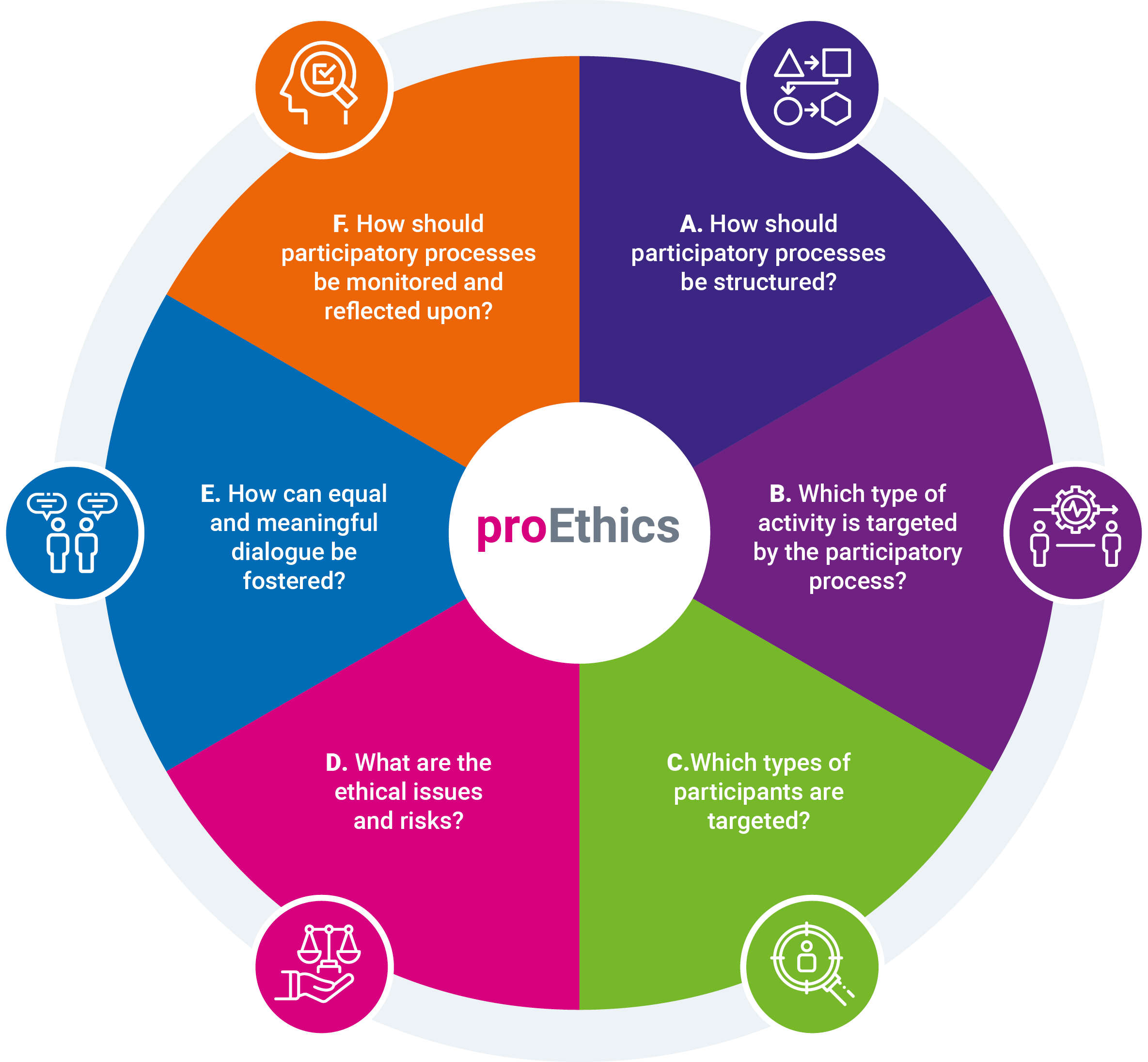Ethics Framework and Guidelines:
Table of Contents
Ethics Framework and Guidelines »List of Abbreviations »Preamble »Introduction »
Part I: General Consideration »On ethics »General considerations on ethics »Ethical assessment procedures and the ethics review »On participation »General considerations on participatory practices »Experiences with the ethics framework »
Part II: Tools & Guidelines »A. How should participatory processes be structured? »B. Which type of activity is targeted by the participatory process? »C. Which types of participants are targeted? »D. What are ethical issues and risks? »E. How can equal and meaningful dialogue be fostered? »F. How should participatory processes be monitored & reflected upon? »
Glossary »EC Reference Documents »Endnotes »
Part II: Tools & Guidelines
Considering the complex relationship between participation and ethics, how should participation be organized and framed? Rather than providing broad criteria, this ethics framework offers a list of questions for consideration. The purpose of the PRO-Ethics Tools & Guidelines is to provide a context-sensitive roadmap in the form of questions for the design, implementation and evaluation of stakeholder participation. Because different contexts offer different opportunities and constraints, this ethics framework provides guidelines as opposed to rigid rules. The questions, considerations, and classifications below address the ethical aspects that need to be considered when planning different types of participatory activities: who, when, how, and why does it matter?
Consideration of these questions is intended to define how stakeholders can be identified and invited to participate in R&I processes, using a pluralistic, ethical approach that may provide added value as laid out above. Ethical issues are guiding these tools, leading to a list of dimensions and questions to address as a roadmap for the diversity of methods and options for participatory approaches. The purpose of this ethics framework is to provide tools and guidelines to determine whether participation is warranted and what actions and considerations should be undertaken in order to ensure that participation is inclusive and ethical. The most suitable participatory path in each instance derives from a consideration of the context and the specific needs of both the institution undertaking it and of the R&I process that it is applied to. Although this ethics framework is designed primarily for RFOs, it may well prove helpful for other organizations.
In the following, we offer a set of questions and associated actions to consider when designing, implementing and evaluating participatory processes:

Each section includes an indicative timeline which has been highlighted for each specific subset. These indications serve to identify when a specific action is to be undertaken. They may be cumulative in the case of an iterative action, taking place at different stages of a process:

BEFORE
participation

DURING
participation

AFTER
participation
The framework is concluded by a glossary of key terms used when discussing participation in research and innovation. This glossary aims to support the development of a common language and shared understanding, and thus facilitate the effective implementation of such processes to a high standard.
Table of Contents »